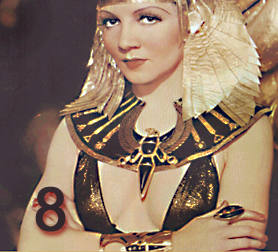
Movie
Milestones
Looking at the notable Movie Milestones can to a great extent succinctly reveal the history of film. The films below
were selected because they represent one of the following elements: a historic first, the start of a film genre, a noteworthy producer or director, or the first in a series of films on a notable theme during a particular era. (Technical milestones are listed here.)
The Cabbage Fairy | 1896
- (French) One-minute film by Alice Blache about a fairy that
produces children in a cabbage patch. | A Trip to the Moon | 1902 - (French) Georges Méliès, a magician-turned-filmmaker, who introduced innovative special effects in the first science fiction film. (14 minutes) | The Great Train Robbery | 1903 - (U.S.) Edwin S. Porter, the first time multiple camera positions and acceleration editing were used for a dramatic story. Introduced the Western genre and film as an art form. (10 minutes)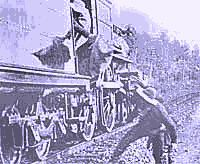
The Western genre would become "the backbone of U.S. filmmaking." Starting with their classic film Stagecoach, director John Ford and star John Wayne would expand on the genre for decades and establish the "myth of the American West" for the world to see (and often believe).
| Claws of the Hun, The Kaiser's Finish | 1914 - 1918 - Hollywood helped World War I effort by producing propaganda films aimed at promoting patriotism. | Birth of a Nation | 1915 - D.W. Griffith's three-hour film about the Civil War introduced history and period pieces as a film genre. It
was the most extravagant film up to that time, but highly controversial because of its racist theme. | The Cabinet of Dr. Caligari, Waxworks, Nosferatu, Destiny | 1920's (German) Producers in Germany introduced a new level of horror and technical sophistication as they reflected the German people's desolate state following the European Conflict. These surreal, depressed and horrific films had a subsequent impact on U.S. filmmakers. | The Sheik | 1921 - The first of numerous exotic and erotic (at least for the day) romance films designed to stimulate box office success. Starred Rudolph Valentino, who represented love-at-first-movie for many women of the day. | Nanook of the North | 1922 - With this film the feature-length documentary film and TV genre was born. It documented the hardships of an Eskimo family. Tragically, the father of the family died of starvation on the ice just as the film was being released. documentary film and TV genre was born. It documented the hardships of an Eskimo family. Tragically, the father of the family died of starvation on the ice just as the film was being released. | Battleship Potemkin | 1925 (Russia) Classic Russian film by Sergei Eisenstein depicts a crew mutiny on a battleship during the Russo-Japanese War. The five parts of the film are skillfully edited into a central theme of unity against political dictatorship. | The Gold Rush | 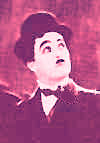 1925 - Regarded as Charlie Chaplin's best film. Chaplin, who subtly brought social issues to public attention, was undisputed genius of silent film comedy. 1925 - Regarded as Charlie Chaplin's best film. Chaplin, who subtly brought social issues to public attention, was undisputed genius of silent film comedy.
| The Jazz Singer | 1927 - Recognized as the first "talkie," even though the sound consisted mostly of music with only a couple hundred spoken words. Starred Al Jolson, whose amiable style is credited with speeding the acceptance of sound . . | Steamboat Willie | 1928 - Walt Disney's first animated cartoon. Scores of classic animated features would follow, including Snow White and the Seven Dwarfs, which put Disney "on the map." Fantasia
is considered his greatest work. For many years, Disney, Warner Brothers, and  Walter Lance cartoons were regularly presented before the main feature at theaters. Walter Lance cartoons were regularly presented before the main feature at theaters. | The Gold Diggers | 1933 - This Busby Berkeley production launched dance and musical extravaganzas with creative camera angles and innovative staging. | Becky Sharp | 1935 - First feature-length Technicolor film. However, Disney had produced a short animated color film, Flowers and Trees in 1932. | In Happened One Night | 1934 - The First of the romantic comedies that marked the 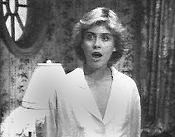 decade. As noted in Module 7, this film destroyed the undershirt industry in the U.S. decade. As noted in Module 7, this film destroyed the undershirt industry in the U.S. | Gone With the Wind | 1939 - Civil War epic in color starring Clark Gable and Vivian Leigh that eclipsed all previous box office records. Re-released in 1989; TV rights later sold to CBS for $25 million. The film,
which earned more than 200-million dollars,
was initially rejected by many studios. | I Was A Communist for the FBI, I Led Three Lives, Red Menace | 1940s - Hollywood fans the fires of the Communist scare with these films. High Noon, released in 1952, allegorically challenged the morality of the era's paranoia. | Citizen Kane | 1941 - Controversial film genius Orson Welles wrote, produced, directed, and starred in what is considered (all in all) the most noteworthy film ever done in the United States. In part because it was ahead of its time, it was a box office flop. | Wake Island | 1942 - Hollywood comes to the aid of the war effort. The first of numerous films to take up the U.S. cause of World War II. | House of Wax, Creature From the Black Lagoon, The French Line | 1950s - Hollywood attempts to blunt the appeal of TV by introducing 3-D, which required special glasses. Knives, spears and even Jane Russell's bust were thrust at audiences. When 3-D bombed, various types of wide-screen approaches were introduced with considerably more success. required special glasses. Knives, spears and even Jane Russell's bust were thrust at audiences. When 3-D bombed, various types of wide-screen approaches were introduced with considerably more success. |
From Here to Eternity | 1953 - To compete with TV, a series of films was launched that included such taboo topics such as adultery and homosexuality that previously were "off limits" to TV. From Here to Eternity was the first of numerous provocative films in this genre. | Quo Vadis | 1959 - One of the more expensive of numerous film spectacles designed to counter the threat of television. One scene required a cast of 5,500 extras. Ben Hur, also made during this era, won 12 academy awards. | Barbarella, Midnight Cowboy, Carnal Knowledge | 1960's - In an effort to compete with television, sex starred in many films during this era. Midnight Cowboy was the only X-rated film (later changed to R) to win an Academy Award for best picture. During this decade even hard-core pornographic films were widely viewed. Some, such as High School Memories, which had marginally-acceptable acting, tried to enter the mainstream. | Blow Up, 8½, La Dolce Vita, Juliet of the Spirits | 1960's - Italian directors Michelangelo Antonioni (Blow Up) and Federico Fellini (note
the other films listed) brought the search for inner reality through symbolic meaning to the screen, often through highly emotional subject matter. | Bonnie and Clyde | 1967 - Aimed at youth culture, this film with its outlaw heroes launched many antiestablishment films that glamorized individuality and even violence over traditional social values.
Later, Easy
Rider would become famous in this category. | Godfather II | 1970's - This film launched numerous sequel films. A few, like The Godfather II, were even better than the original. | Jaws, Airport, Earthquake, The Towering Inferno, The Poseidon Adventure | 1970s Big-budget, big star, disaster films tended to dominate the box office, along with such violent films as The Wild Bunch, The Texas Chain Saw Massacre, and Friday the 13th. Hollywood tried new levels of violence to lure younger audiences away from TV. | The Star Wars episodes start, introducing a new era of special effects. | 1977 -1999 - George Lucas has produced more than 50 films, the most popular of which have been the Star Wars episodes. Just as notable, the various Lucas special effects facilities 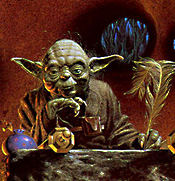 have pioneered the development of numerous computer and film-based visual and audio effects. have pioneered the development of numerous computer and film-based visual and audio effects. | Do the Right Thing, She's Got to Have It, Clockers, Mo' Better Blues, Malcom X, Boyz 'N the Hood | 1980's - African-American filmmakers such as Spike Lee and John Singleton were "mainstreamed" in the Hollywood scene with these films. | Look Who's Talking, Yentl, Home for the Holidays, The Piano | 1980's - Women producers and directors, such as Jodie Foster (below), Penny Marshall, Barbara Streisand, Amy Heckerling, and Jane Compion are "mainstreamed" into an industry previously dominated by white males. | The English Patient,
L.A. Confidential | 1990s - Although most filmgoers are between the ages of 12 and 25, with these films Hollywood tried to interest a somewhat older audience, in part to bolster video and foreign sales. | Roger Rabbit | 1990s - By using computer techniques, actors were ingeniously combined with cartoon animation to create films with content appealing to both children and adults. Today, most feature films rely on some form of computer enhancement.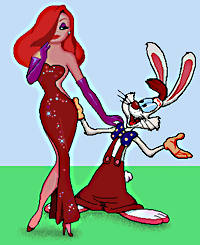 . . | Jurassic Park sets box office record; total receipts $1 Billion. | 1990s - Steven Spielberg is one of the most acclaimed and financially successful directors of this century. Not only has he produced numerous fantasy, action, and light entertainment films, but with films like The Color Purple, Schlinder's List, Saving Private Ryan, and American Beauty, he dramatically presented thought-provoking and at times disturbing messages. Spielberg work has garnered a shelf full of Oscars.  | Pretty Woman, My Best Friend's Wedding,
Notting Hill. Steel Magnolias, Erin Brockovich
| 2000 - After four successive hit films that totaled over $1 billion in revenue, Julia Roberts became the first actress to join Hollywood's elite $20 million-a-movie  club (previously reserved for a few male stars), and is now "the most powerful celebrity on the planet," according to Forbes magazine. club (previously reserved for a few male stars), and is now "the most powerful celebrity on the planet," according to Forbes magazine. | Welcome to Sarajevo | 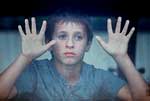 Welcome to Sarajevo seamlessly weaves TV news footage into a dramatic film to bring audiences a sense of the insanity surrounding events that took place in Sarajevo. As with Schlinder's List, Under Fire and The Killing Fields, this film demonstrates that film is the most powerful of the media in dramatically capturing the substance of actual events and bringing them home to audiences. Welcome to Sarajevo seamlessly weaves TV news footage into a dramatic film to bring audiences a sense of the insanity surrounding events that took place in Sarajevo. As with Schlinder's List, Under Fire and The Killing Fields, this film demonstrates that film is the most powerful of the media in dramatically capturing the substance of actual events and bringing them home to audiences.
|
 Click below Click below  to see photos from "The Best Movies of all Time." to see photos from "The Best Movies of all Time."
|


 documentary film and TV genre was born. It documented the hardships of an Eskimo family. Tragically, the father of the family died of starvation on the ice just as the film was being released.
documentary film and TV genre was born. It documented the hardships of an Eskimo family. Tragically, the father of the family died of starvation on the ice just as the film was being released. 1925 - Regarded as Charlie Chaplin's best film. Chaplin, who subtly brought social issues to public attention, was undisputed genius of silent film comedy.
1925 - Regarded as Charlie Chaplin's best film. Chaplin, who subtly brought social issues to public attention, was undisputed genius of silent film comedy. .
. Walter Lance cartoons were regularly presented before the main feature at theaters.
Walter Lance cartoons were regularly presented before the main feature at theaters. decade. As noted in Module 7, this film destroyed the undershirt industry in the U.S.
decade. As noted in Module 7, this film destroyed the undershirt industry in the U.S. required special glasses. Knives, spears and even Jane Russell's bust were thrust at audiences. When 3-D bombed, various types of wide-screen approaches were introduced with considerably more success.
required special glasses. Knives, spears and even Jane Russell's bust were thrust at audiences. When 3-D bombed, various types of wide-screen approaches were introduced with considerably more success. have pioneered the development of numerous computer and film-based visual and audio effects.
have pioneered the development of numerous computer and film-based visual and audio effects.
 .
.
 club (previously reserved for a few male stars), and is now "the most powerful celebrity on the planet," according to Forbes magazine.
club (previously reserved for a few male stars), and is now "the most powerful celebrity on the planet," according to Forbes magazine. Welcome to Sarajevo seamlessly weaves TV news footage into a dramatic film to bring audiences a sense of the insanity surrounding events that took place in Sarajevo. As with Schlinder's List, Under Fire and The Killing Fields, this film demonstrates that film is the most powerful of the media in dramatically capturing the substance of actual events and bringing them home to audiences.
Welcome to Sarajevo seamlessly weaves TV news footage into a dramatic film to bring audiences a sense of the insanity surrounding events that took place in Sarajevo. As with Schlinder's List, Under Fire and The Killing Fields, this film demonstrates that film is the most powerful of the media in dramatically capturing the substance of actual events and bringing them home to audiences.